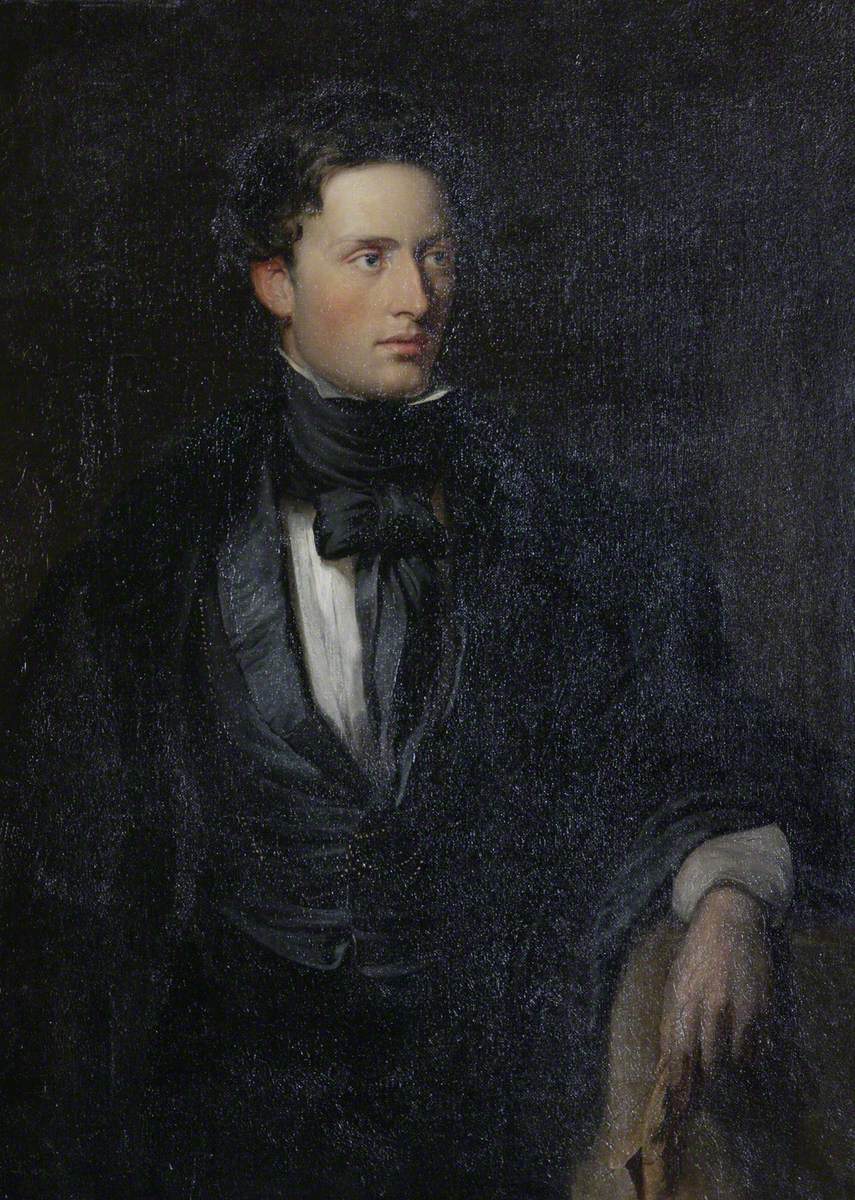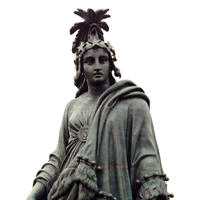More about Thomas Crawford
Works by Thomas Crawford

Contributor
Thomas Crawford is one of the greatest American sculptors you’ve never heard of.
Unless you spend a significant amount of your time admiring the U.S. Capitol Building, you may not realize several of its famous adornments were created by Thomas Crawford. In 1832, at the ripe old age of fourteen, Crawford began his artistic journey as an apprentice woodcutter. After demonstrating his talent and realizing that all the cool sculptors use marble, he transitioned to the New York stone-cutting firm Frazee and Launitz. The young sculptor, in what I can only imagine was a hilarious intern task, created gravestones for the firm but later transitioned into mantelpieces and portrait busts.
Both John Frazee and Robert Launitz fostered Crawford’s natural ability during his time in New York and inspired the classical sculpting style he would later become known for. Having succeeded in developing his craft and a potentially unhealthy gravestone habit, Crawford left New York for Rome in 1835 with a letter of introduction from Launitz to his mentor in Rome, Bertel Thorwaldsen. Thorwaldsen, who was the Beyonce of European sculptors in the 19th-century, became Crawford’s teacher and mentor.
Crawford created a studio in Rome and is credited with being the first American sculptor to settle there. With a new studio and a whole lot of marble, Crawford began pumping out portrait busts like selfies at Coachella. One such bust - a portrait of Senator and all around badass Charles Sumner - brought him praise from American legislators, leading to a host of commissions for his work. His first major commission was the striking full-body sculpture Orpheus and Cerberus which allowed Crawford to experiment with new subject matter. Sumner, who was Crawford’s largest supporter and BFF, convinced his fellow wealthy socialites to have the piece cast in marble and exhibited at the Boston Athenaeum.
Perhaps the greatest commission of Crawford’s career occurred in July of 1853. The U.S. Capitol Building was undergoing an expansion to accommodate the growing number of states and, thus, representatives added to the Capitol Building. Supervising engineer of Capitol renovations and previous owner of the world's greatest beard Captain Montgomery Meigs asked Senator Edward Everett to recommend a sculptor to design the building's exterior adornments. Everett, a close friend and colleague of Senator Sumner (wink wink), recommended Thomas Crawford to design the exterior features. This included the Progress of Civilization pediment, the Justice and History sculpture, two bronze doors, and the Statue of Freedom which sits atop the highest point of the Capitol rotunda.
In a case of absolutely rotten luck, Crawford began to develop a severe case of double-vision in 1856 during the height of his sculpting career which crippled his ability to work. He sought help from multiple old-timey doctors who believed he suffered from a tumor located in his eye. His doctors, who I'll remind you still believed smoking was nutritious, wished to perform an experimental treatment to remove it. This treatment would cause the complete destruction of one eye and the eventual death of Thomas Crawford only four months later. Normally, I would try to find some humor in the situation but I only consider this to be the cruelest irony in the universe.
Featured Content
Here is what Wikipedia says about Thomas Crawford (sculptor)
Thomas Gibson Crawford (March 22, 1814 – October 10, 1857) was an American sculptor who is best known for his numerous artistic contributions to the United States Capitol, including the Statue of Freedom atop its dome.
Check out the full Wikipedia article about Thomas Crawford (sculptor)











